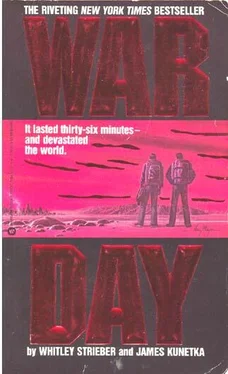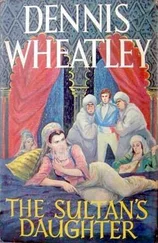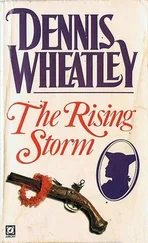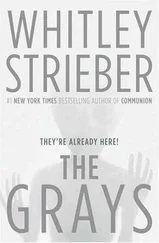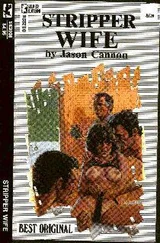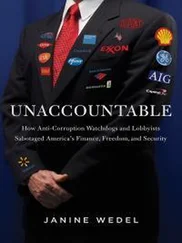It was like the aftermath of a great battle. The hospital itself must have been a scene of unspeakable horror.
We took Meg back to the church, where she expired at four o’clock that afternoon, after a very hard five hours. The father of her daughters never showed up. I do not know what happened to the two Parks girls.
As soon as we were back at Grace, we all took long showers.
Anne and Andrew and I decided that we would remain inside this building, away from the windows, for as long as we could. We did not know then that the hot cloud from Washington was on its way up the seaboard, spreading extinction. If we had tried to leave then, we would have been caught in it with the millions whose footsteps still had not stopped.
The teachers organized activities. The children threw themselves into work on a folk song festival. Along with myself and Tucker and a couple of others, the rector of the church and the Head formed a survival committee. We inventoried the food and discovered that we could do about a thousand calories a day per person for two more weeks. We wouldn’t starve, but as far as quality was concerned, we were going to have protein problems.
There were cans of beans and soup, but the only meat was the six freeze-dried hamburgers Anne had brought. There was no longer any gas pressure, but we worked out a method of using the stove anyway. We found that we could heat food by building a fire from paper and pieces of chairs on top of the burners and hanging the pots up in the exhaust flue.
Our first meal consisted of spaghetti with marinara sauce from cans, and pork and beans. It was washed down with fruit juice. Not much, but I suspect that it was better than many got in New York on that day. We ate in the gym, off paper dishes saved from last year’s May Fair and intended for use at the Christmas party.
All during that day, neighborhood people had been congregating in the church. Our food situation improved rapidly. Everybody brought canned goods, so the increasing numbers were no drain on those resources. We began to worry instead about water, and drew up strict regulations about those long showers we had been taking.
No baths unless you made an “approved excursion.”
We were determined to live through this, somehow, even though most of us felt that the rest of the world had been destroyed.
Falling water pressure rapidly became a more and more serious problem. Already high-rise apartment buildings were uninhabitable above the sixth floor because of a lack of electrically pumped water. Low-rises were suffering too, as was Grace Church School.
Broken mains in the bombed boroughs were draining the system dry. Soon our rooftop tank would be all we had left.
More even than the lack of water and power, though, people were scared because of the lack of news. Those who had ventured as far east as the river confirmed that there was a holocaust going on in Brooklyn and Queens. They had been able to feel the heat on their faces even on this side of the river, and the wind being pulled into the fire was stiff enough to make it hard to stand up. People reported that the conflagration made a great, hissing roar. They described it variously as sounding like a railroad train, a hurricane, or the voice of an angry crowd.
The electromagnetic pulse generated by the huge bombs the Soviets had detonated in near space was the answer to the mystery of why even portable radios wouldn’t work, and why people with recent-model cars couldn’t get them started. The vast majority of electronic devices—computers, televisions, radios, microwave stations, radar, avionic devices on airplanes, electronic car ignitions—had been shorted out by Soviet bombs detonated in outer space.
The explosions had been invisible and had had no effect except to blanket the country with a brief, massive burst of electromagnetic energy. Certain military equipment had been shielded, and even some computers owned by big banks and corporations.
They shielded such devices, during the mid-eighties, to resist a 50,000-volt pulse. So the Soviets simply generated a larger one. Recent estimates are that it exceeded 150,000 volte. Thus they overcame billions of dollars’ worth of shielding with bombs worth at most a few million. An efficient means of destruction.
Because of the electromagnetic pulse, we had no access to broadcast news.
I will never forget the moment when somebody outside started yelling about the Times. The next thing I knew, there was a man coming in with a paper. It was the famous sixteen-page extra, which was the last news we were to see for a long time. I still don’t know how the Times managed to get that paper out. Someone told me it was produced in New Jersey before local electric power was lost.
I remember the headline: NUCLEAR ATTACK BY AT LEAST THREE MISSILES DEVASTATES CITY. And the lead: “Nuclear weapons detonated over Queens and Brooklyn on October 28 at approximately 4:45 P.M., causing catastrophic devastation and leaving both boroughs in flaming ruins. An estimated two million people lost their lives.”
It was there also that we read of Washington. We were stunned, confused. Washington no longer existed. There was no President, no Vice-President, no Congress, nobody. We had no government.
“Washington, D.C., the seat of government of the United States of America since 1800, has been destroyed by a surprise nuclear air tack. Reports from the area indicate catastrophic destruction on a scale previously unknown in human affairs. The city was swept away in a sea of Are. Not a building remains standing, not a monument intact. Observers are unable even to approach within ten miles of the city. Baltimore, Maryland, is also burning, as are the majority of smaller communities surrounding the District of Columbia.” It went on, but I find that my memory does not serve me to quote the rest.
The paper recommended that people stay indoors, reported the flooding of the subway system, and announced that the police department had opened Madison Square Garden, the Armory, and the Convention Center as protected public shelters.
I would say that the appearance of that newspaper was one of the few good things that happened in those terrible days. It served first notice that humanity still existed, that we had been hurt but we were not going to give in just yet. I know that people lost their lives doing the reporting that went into it, not to mention transporting and delivering it. Not only Times people were involved in the edition, but also news crews from the television networks and the staff of the Daily News, which was without power to run its own presses.
Still, reading in black and white that Washington was gone made me frantic.
Until that moment I hadn’t thought beyond the immediate situation: how to live through the next few hours, and would I come down with radiation sickness? Every passing moment of queasiness or faint chill was terrifying. We had set up a hospital in the parents’ lounge, which was also an interior room, and there we attended the sick and dying as best we could. The school’s science teacher, Mrs. Dannay, had managed to rig up a thing called a Kearney Fallout Meter, and was engaged in dividing the school into safe and unsafe areas.
The KFM was made in a Folger’s coffee can and consisted of two leaves of aluminum foil hung side by side on strings inside the can. It was covered by the clear plastic top from a Tupperware container in which the fourth grade had been hatching frog eggs. The bottom of the can held crushed gypsum, used as a drying agent because humidity can affect the ability of the foil strips to respond to the presence of radiation. Mrs. Dannay had dug the gypsum out of the wall in the lab. It was just ordinary wallboard.
She could tell by the way the leaves of foil spread apart or came together how much gamma radiation was present in a given area.
Читать дальше
